This article shares the best Inverters for campervans and RVs. A power inverter is one of the most important parts of an off-grid electrical system. They turn DC power from your battery into AC power that you can use to charge or power all kinds of AC electronics. To power things like laptops, blenders, TV’s and more, you will need an AC inverter for your campervan or RV.
Before I list some of the best inverters for campervans and RV’s, let’s talk about some key factors for making your selection.
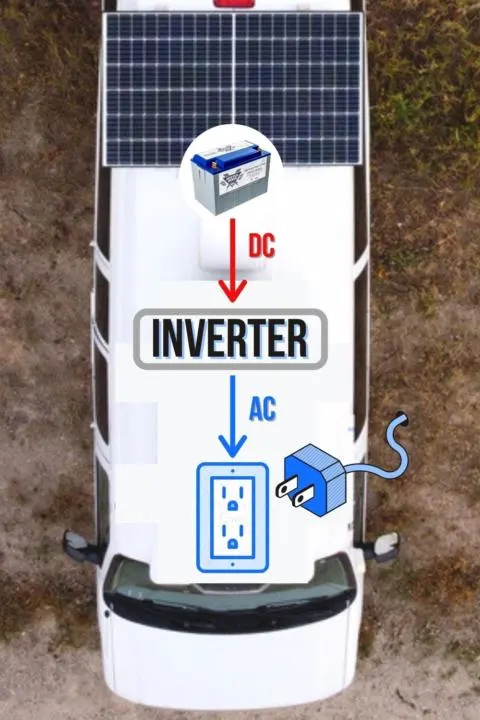
This post may contain affiliate links. Disclosure policy.
What to Consider When Choosing an Inverter For A Campervan
Wattage Rating
The primary factor when choosing an AC inverter is the wattage rating, that is, how many watts of power the inverter can supply. This will determine what devices or appliances the inverter is capable of powering. But this rating only limits the amount of power that can flow at one time, the total capacity will still be decided by the size of your battery or battery bank.
And most inverters are rated in continuous Watts, that is, the number of watts they can produce. You may see different numbers for “surge” and “continuous”. Things like motors often require extra power on start-up, but only for a short “surge” period.
Most campervans electrical setups have a 1000-2000 watt inverter. This is usually enough for laptops, TV’s, blenders, electric water kettles, small microwaves, etc. For RV’s and campervans with more demanding appliances, a 2000-4000 watt inverter may be necessary.
How Much Power Do You Need?
It’s important to have an understanding of how much power you need, but also how much power your batteries can deliver. This isn’t common for your average person because when you live in a normal house on-the-grid, you just plug things into the outlet and they work. No need to concern yourself with whether it’s using 80watts or 800watts.
But for choosing the best inverters for campervans and RVs, you need to be much more aware of your specific power needs. So for a quick example, my laptop only requires about 60 watts to charge. But an average toaster oven requires about 1,400 watts. Clearly, these two common items are not in the same ballpark.
So you really need to evaluate what exactly you are trying to power to choose an appropriate size inverter. Most devices or appliances will have specs printed on them or their power supply that tell you how much power they use. Look for “W” or “Watts”, or you can covert ratings given in Amps with this formula: [ Watts = Amps * Volts ]
As long as you aren’t using devices/appliances simultaneously, then you only need to worry about the individual power draw of each device. But anything you use at the same time will require you to add the power draw together. For example, if you want to run an Xbox One game console (≈ 110W) and a TV (≈ 50W) simultaneously, then you have to account for both power draws together (≈ 160W).
Size Up
The last important detail when sizing an inverter, is to get one with about 20% more power than you need. Sadly, most inverters advertise their performance under ideal conditions, so assume that you will probably get 5-20% less power than advertised. And you don’t want to be working your inverter against its upper limits regularly. So plan on getting an inverter with a little margin of extra power above what you need.
Pure Sine Wave vs Modified Sine Wave
The two main types of Inverters are Pure Sine Wave (PSW) and Modified Sine Wave (MSW). Basically, Pure Sine Wave is a much ‘cleaner’ power that is suitable for all electronic devices. Modified Sine Wave is a cheaper alternative that isn’t good for some types of electronic devices. For certain computers, inductive loads, or delicate electronics, MSW may cause damage, overheating, noisy operation, or loss of efficiency.
My gut feeling is that the NEED for Pure Sine Wave is somewhat overstated, and most consumers are just operating on the “better safe than sorry” principle. Despite my suspicions, I personally feel that Pure Sine Wave is worth the extra price difference for better performance and not having to worry about damaging other expensive electronics. Here’s more detail and you may come to your own conclusion about PSW vs MSW.
Battery Charging Feature
Some more expensive inverters will have the ability to charge your house batteries if supplied with power from an external source (shore power, generator, etc). This might be an attractive option if you are frequently at campsites with hookups, or have access to grid power. But again they are very expensive, and overkill for most campervans and even some RVs.
The Best Inverters For Campervans and RVs
Xantrex 12v Pure Sine Wave Inverters (Best Value PSW)
Xantrex makes a very good lineup of affordable inverters. They include many valuable safety features, GFCI protection, low voltage cutoff, overload shutdown, over-temperature shutdown, and more. (Full Xantrex Inverters Full Spec Sheet)
Giandel Pure Sine Wave Inverters (Larger Power Needs)
Giandel makes great budget-friendly inverters for more demanding power needs. They offer inverters for both 12v and 24v systems.
Kreiger Modified Sine Wave Inverters (Ultra-Budget Friendly)
If you want a Modified Sine Wave inverter, these Kreiger MSW Inverters are great. They offer some serious savings versus their PSW competition. But they are still packed with great safety features.
Inverter / Chargers
Inverter Chargers are a bit of a different breed than simple AC inverters. They usually have many more functions and technologies to serve as the “brains” of a larger electrical setup. Generally, they are overkill for a campervan. And their large footprint is also a negative for small campervans. But RV’s often have them because they connect to grid power and gas generators more frequently. And size isn’t much of an issue. Despite their expensive pricetag, there really is no substitute for Inverter/Chargers in large electrical setups.
Xantrex Freedom XC Inverter/Charger (Best Value)
These Xantrex Freedom XC Inverter Chargers are the most affordable option that is still good quality and reliable.
Victron MultiPlus Inverter / Charger
“The MultiPlus is a combined inverter and charger in one elegant package. Its many features include a true sine wave inverter, adaptive charging, hybrid PowerAssist technology, plus multiple system integration features.”
Samlex Evolution Series Inverter / Charger
These Samlex Inverter Chargers are another capable and highly customizable inverter/charger. Both models can be used with 12v or 24v.
Installation
Installing the inverters for campervans and RV’s is a task not well suited to beginners. However, if you are willing to learn it doesn’t take too much time to get up to speed. You must have working knowledge about wiring, fuses, connectors, crimping, and how to appropriately size those items to safely and correctly install an inverter.
To get a good introduction to these concepts read my post: Vanlife Solar: Wiring, Connectors, and Crimping.
If you are still not comfortable installing yourself, then seek help from a professional.
All Inverters require a fuse, switch, wiring, and proper connectors to install. What you need exactly will vary depending on the specific unit. Some may be supplied some of these components, like a fuse and/or remote switch. Or you may have to purchase them separately.
And lastly, one common complaint about inverters is that they are supplied with “starter wires” that are too skimpy to safely handle the expected loads. This is honestly pretty irresponsible of the manufacturers because they advertise their kit as “everything you need to install”. But in actuality, you almost always need to purchase thicker gauge wire for a proper install. So be prepared to shell out a little extra money for the proper size wires.
Use this Wire Size Calculator and Fuse Size Chart determine the appropriate hardware.
Buy High-Quality Copper Wire and Lugs Here (Only sells 3/8″ lugs, which may not fit all inverters)
Buy ANL Fuses And A Heavy-Duty Switch (Some Inverters may supply a switch/remote)
OR (instead of fuse&switch)
Buy A High-Quality Circuit Breaker Here

Takeaway: The Best Inverters For Campervans and RVs
Having an inverter in your campervan or RV will give you access to AC power. This greatly expands the things you can power with your mobile electrical setup. Choosing the right size is key to powering the things that make your life more comfortable. Be sure to consider your specific power needs.
And if you are building a very large setup and/or often want to charge your batteries with grid power or a generator then you should consider investing in an Inverter/Charger.
These are the best inverters for Campervans and RVs so you can have confidence that you are getting a quality product.
Help share this post About ‘The Best Inverters For Campervans and RVs’ on Pinterest!
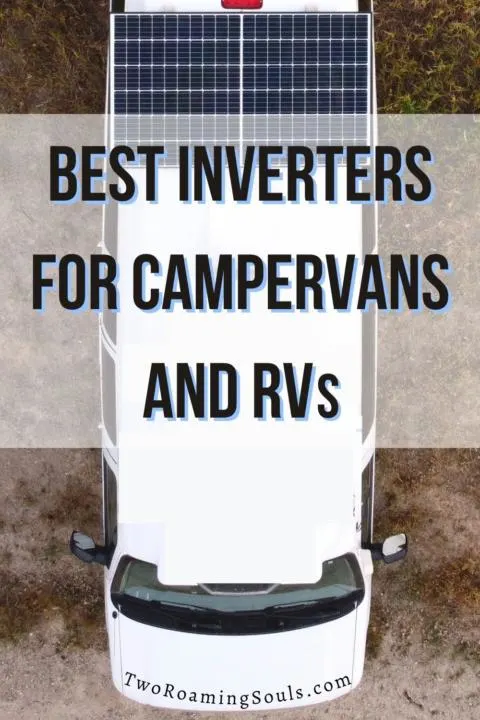
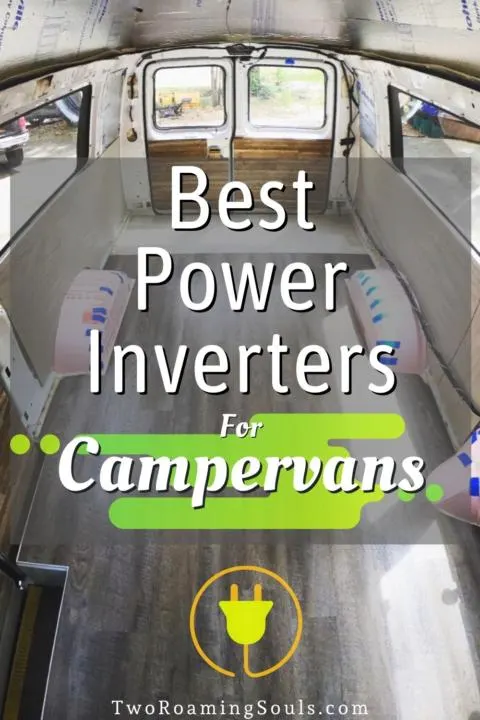

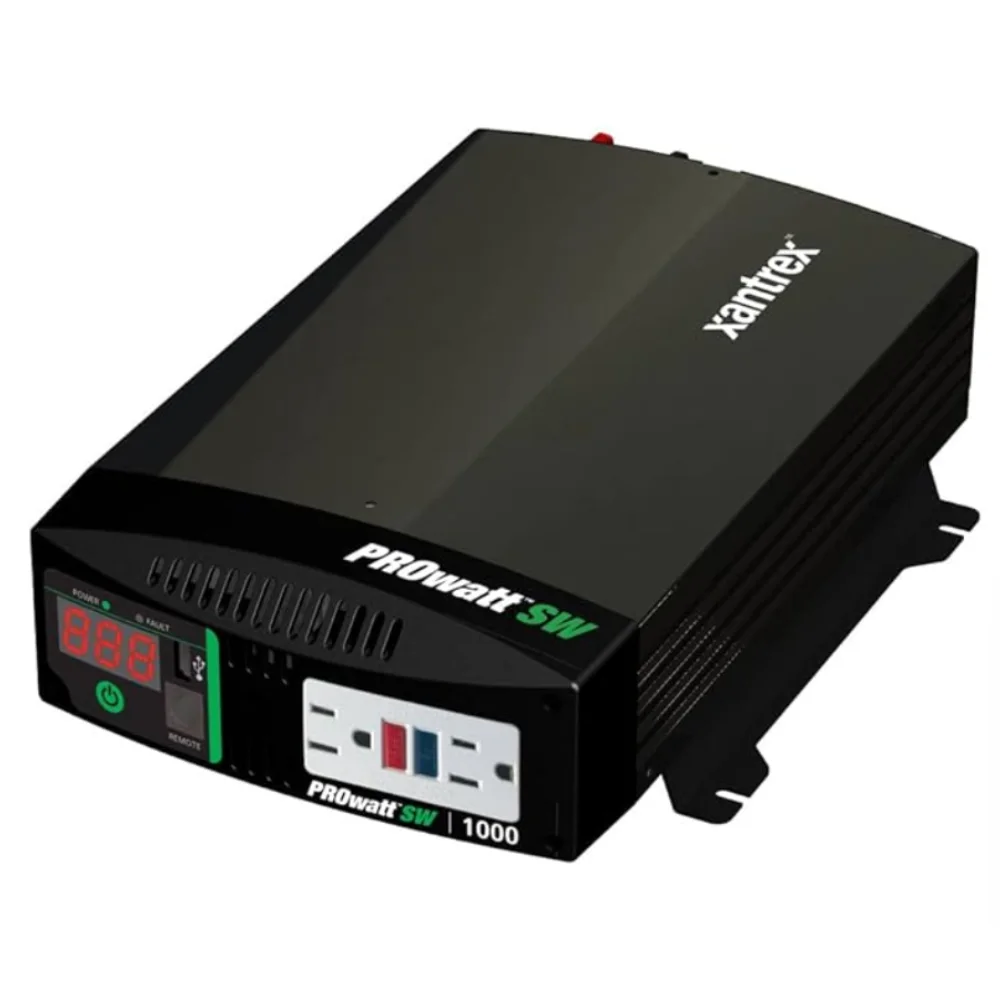
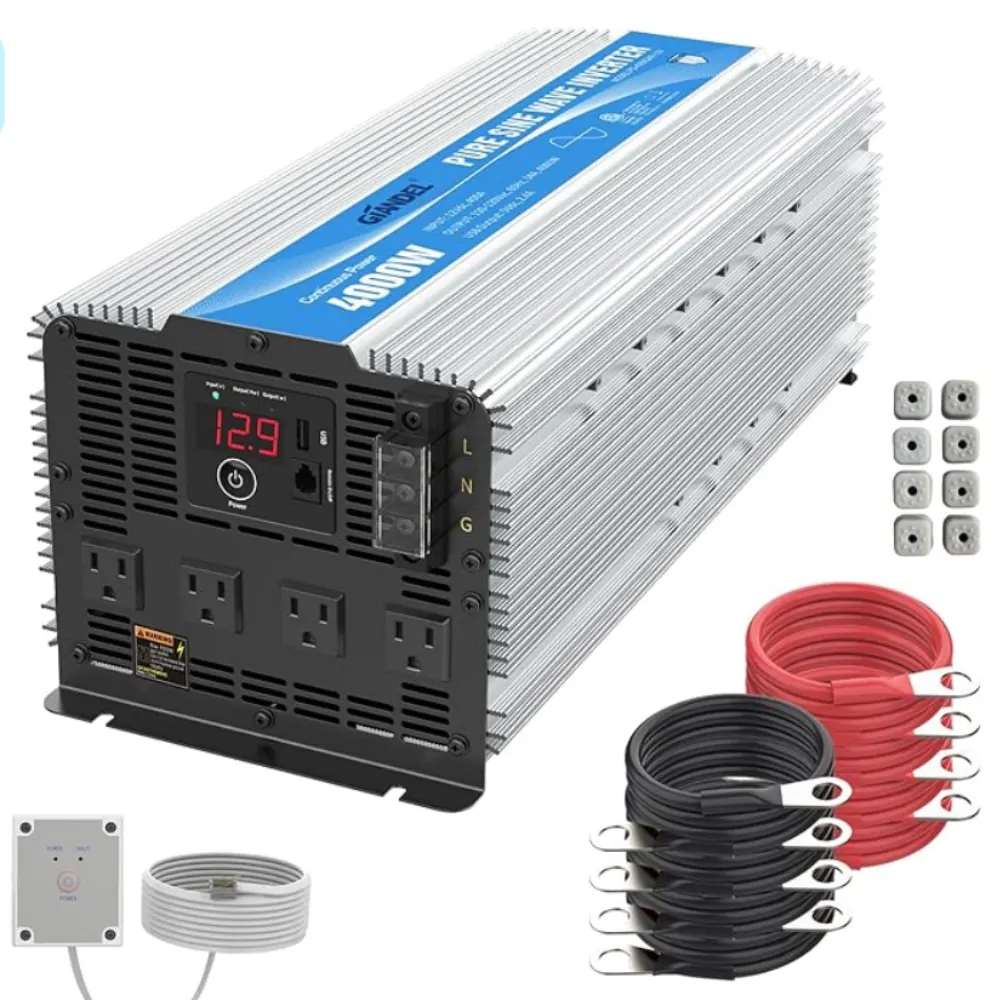
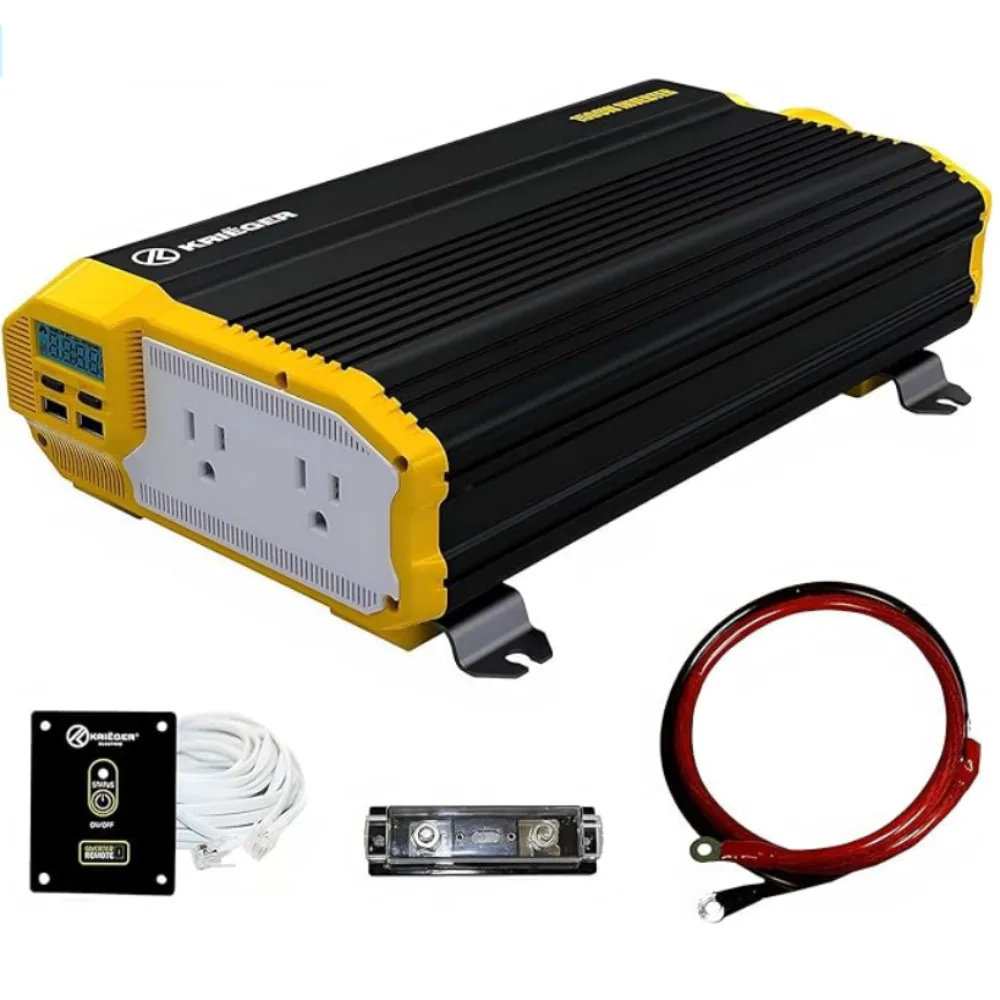
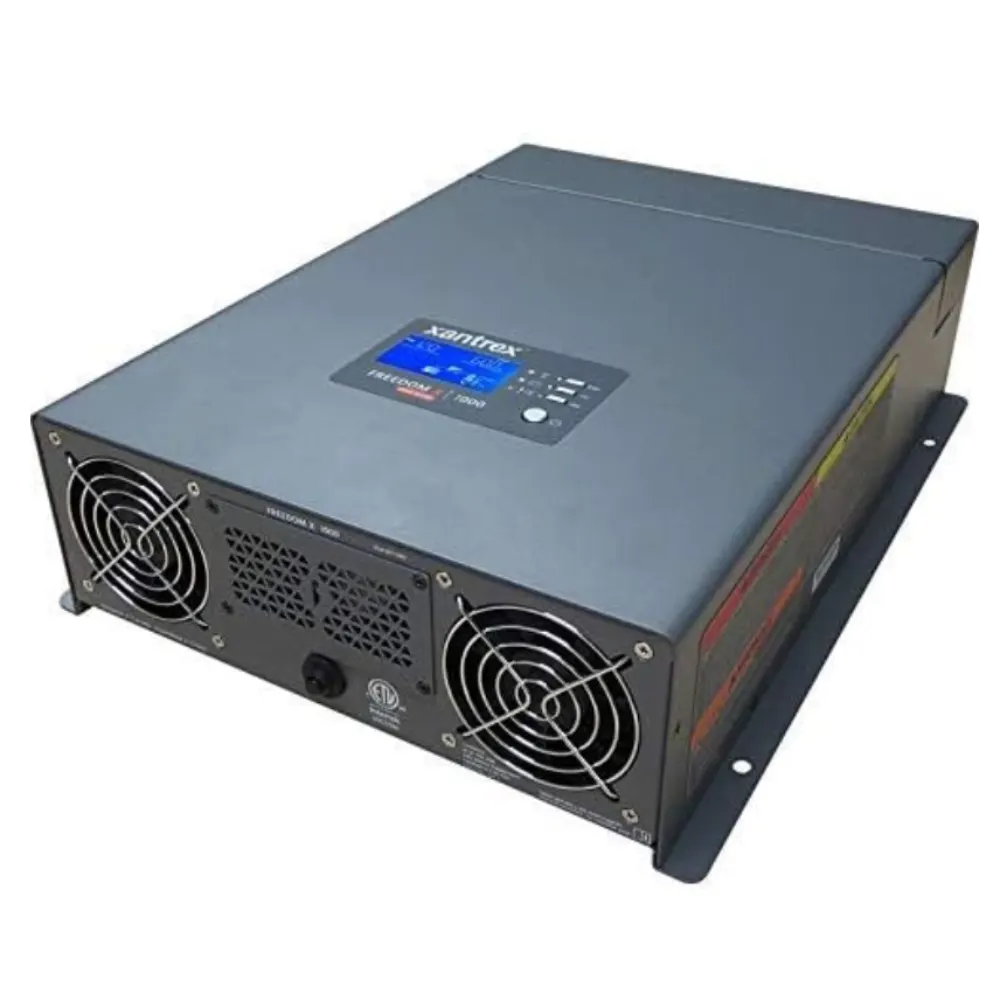
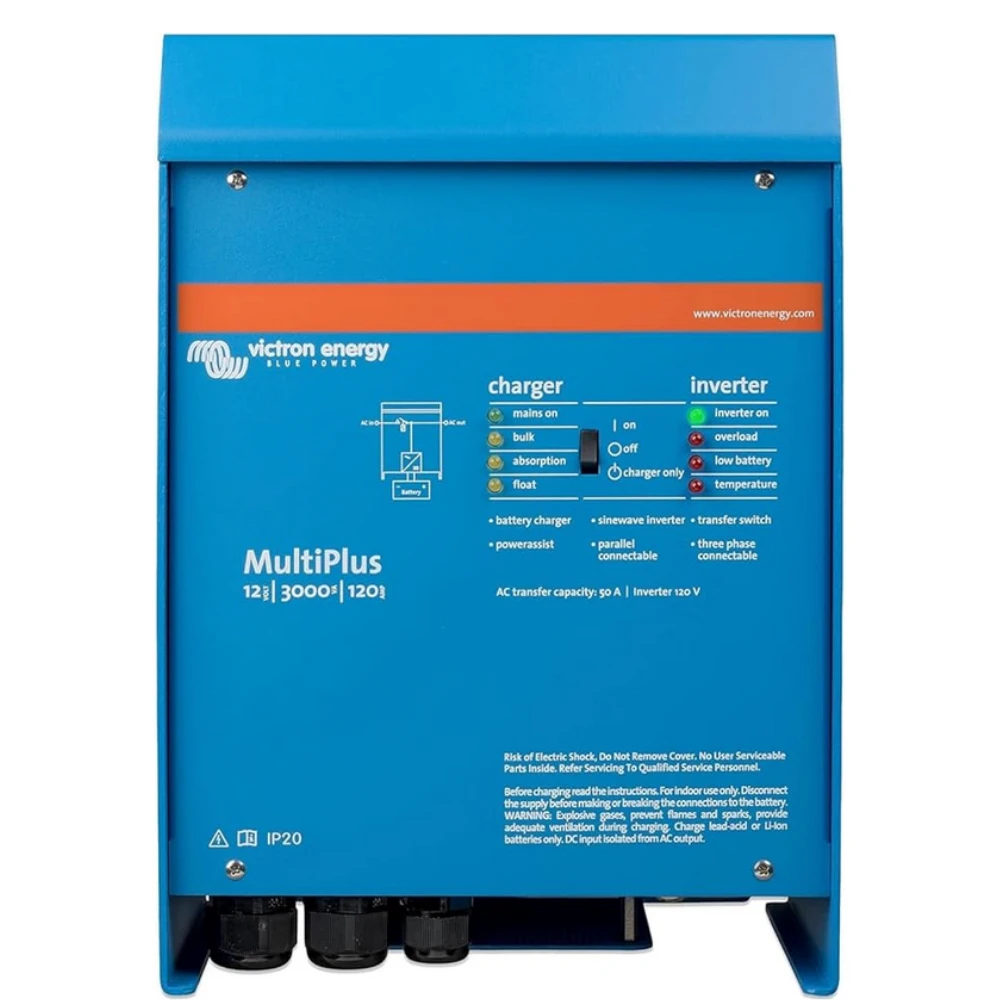
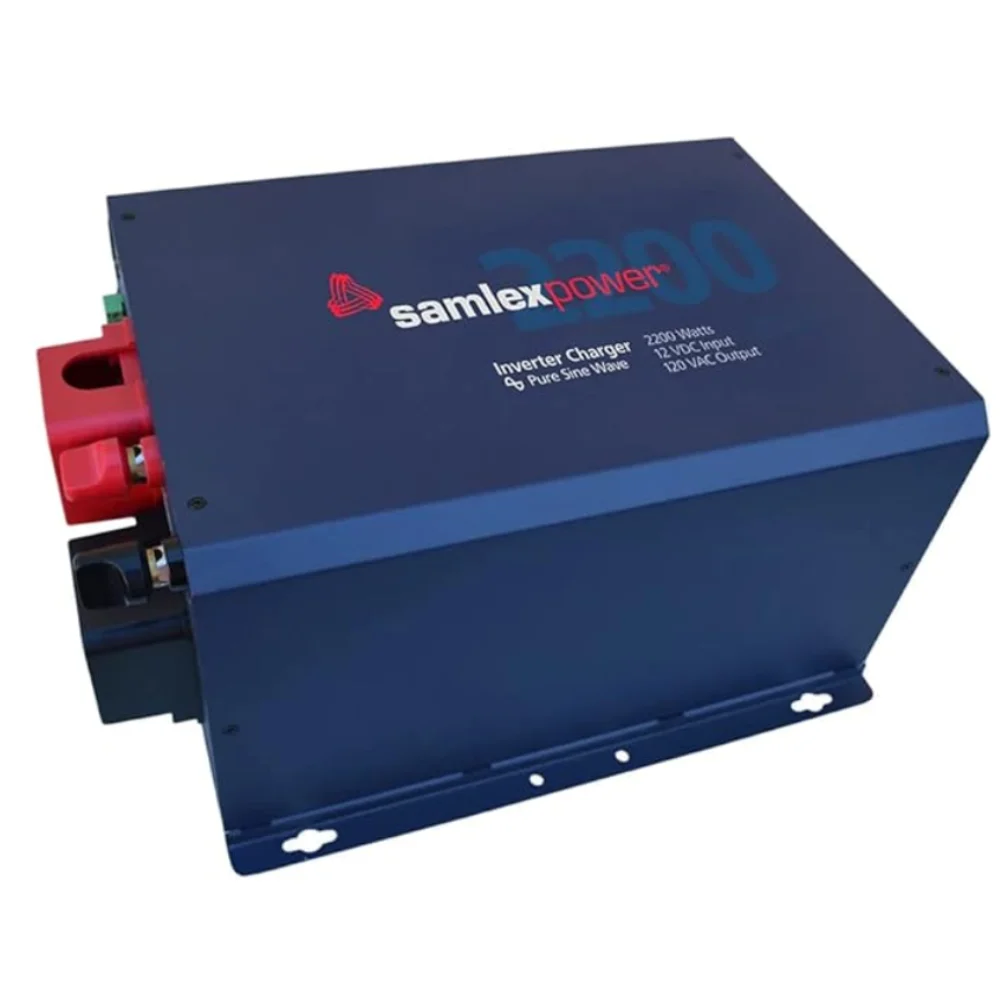
2023 Ford Transit Trail | Is This Upfit-Ready Campervan Worth It For Vanlife? - tworoamingsouls
Wednesday 1st of March 2023
[…] Ford mentions that an AC inverter comes standard on the Transit Trail. But I couldn’t find any more information on this. (Best Inverters For Campervans) […]
Vanlife: Campervan Lighting - tworoamingsouls
Saturday 20th of February 2021
[…] LED light strips are very user-friendly. Most come with a switch/dimmer and a normal AC plug so you can plug them into an outlet and you’re ready to go. That is, if you have an inverter with outlets for normal AC power. (Best Power Inverters For Campervans) […]